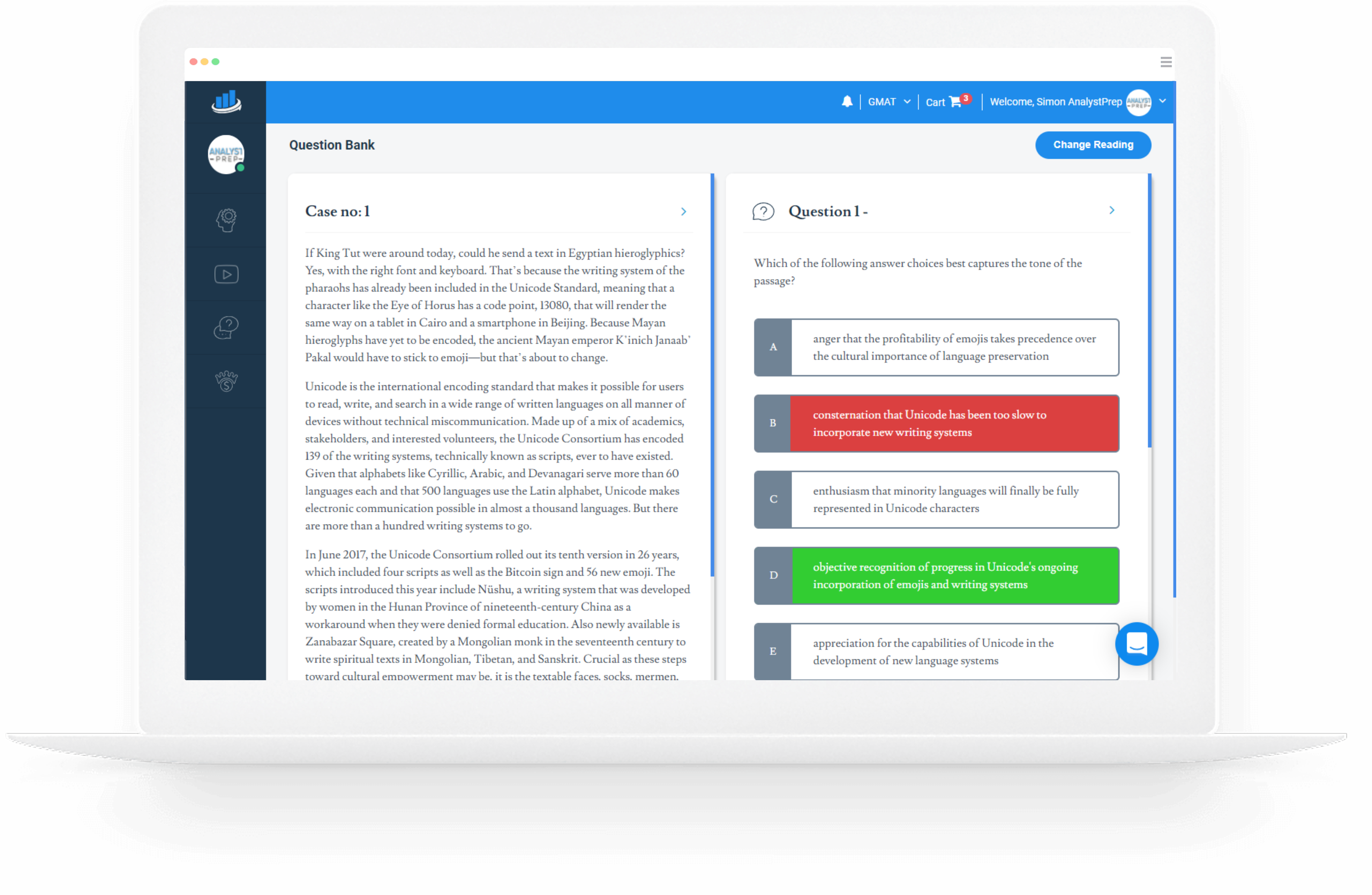GMAT® Focus Verbal Practice Questions
Get Access to 1,000 Exam-Style Questions

What is GMAT’s Verbal Reasoning Questions?
The Verbal Reasoning section of the GMAT Focus Edition is designed to evaluate a candidate’s proficiency in understanding, analyzing, and expressing ideas effectively in English. This section is essential for determining a candidate’s readiness for the business school environment.
In the GMAT Focus Edition, the Verbal Reasoning section is adapted to align with the revised format. It features a series of multiple-choice questions to be completed within a 45-minute timeframe, focusing on two main types of questions:
- Reading Comprehension: This portion presents passages on a variety of topics. Candidates are required to interpret, analyze, and apply the information from these passages. Questions may ask you to reference directly from the text or to integrate the passage’s ideas with broader perspectives.
- Critical Reasoning: This section tests your ability to understand, analyze, and evaluate arguments. Questions are derived from a range of sources, allowing candidates to demonstrate their reasoning skills even when the subject matter is unfamiliar. It involves making arguments, evaluating others’ arguments, and formulating or assessing action plans.
The GMAT Focus Edition’s Verbal Reasoning section is crafted to assess key skills relevant to a business school environment, ensuring candidates are well-prepared for the types of reading and reasoning tasks they will encounter in their graduate studies. This streamlined approach, fitting within the shorter overall structure of the GMAT Focus Edition, reflects a more focused assessment strategy while maintaining the rigorous standards of the original GMAT exam.
What are some of the Answering Strategies in Verbal Reasoning Questions?
For the GMAT Focus Edition, the Verbal Reasoning section’s preparation tips can be adapted as follows:
Reading Comprehension Questions:
- Understanding the Question: Ensure you fully grasp what is being asked. Sometimes, an answer choice might be incorrect even if it seems to align with the passage’s information.
- Review All Options: Before selecting an answer, carefully read through all the available choices.
- Thorough Passage Analysis: Before answering, study the passage in detail. This helps in understanding the context and nuances of the text.
- Base Answers on the Passage: Your answers should be grounded in what the passage explicitly states or implies. Focus on the specific inquiry of the question and the information presented in the passage.
Critical Reasoning Questions:
- Consider All Choices: Don’t rush to an answer; review all options. An answer that appears obvious at first may not be correct.
- Understand the Core Issue: Grasp the main subject of the question, then revisit the relevant part of the text for better clarity.
- Identify the Conclusion: In argumentative questions, pinpoint where the conclusion is drawn. It’s not always at the end of the argument.
- Interpret Statements Correctly: Distinguish between factual statements and those that are implied or inferential. Understanding the basis of the question is crucial.
Questions Answered by our Users
Satisfied Customers
Preparation Platform By Review Websites
Some Free Exam-style GMAT Focus Verbal Practice Questions
GMAT Focus Verbal Problems
GMAT® Focus Prep Packages
GMAT Focus Complete Package
$
39
/ month
- Conceptual Video Lessons
- Quantitative Practice Problems
- Verbal Practice Problems
- Data Insight Practice Problems
- Customizable Quizzes
- Performance Tracking Tools






